It’s time every Juan flies—sustainably!
Air travel is a luxury enjoyed by many but could be detrimental to the environment. It accounts for around five percent of global warming, resulting from the CO2 emissions, among other things.
Cars aren’t good, either. And trains or ships aren’t all that green. Walking and cycling are probably the best options. Only these won’t get you very far.
So, what do you do when the travel bug hits you? Make smarter, sustainable choices!
If you must fly, travel short distances, be sure to pack light to lessen the plane’s load. Or try to book a non-stop flight. Non-stop flights reduce carbon emissions by 100 kg per person, compared to connecting options.
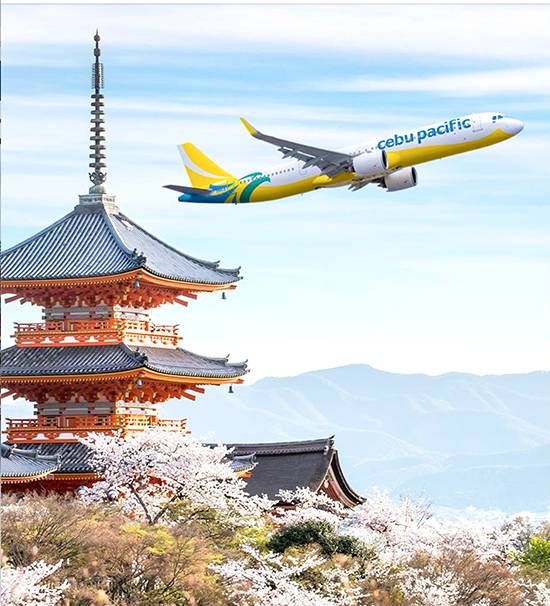
Better yet, patronize/support airlines that use alternative sources of energy.
Cebu Pacific Air (CEB), for example, mounted its first blended Sustainable Aviation Fuel (SAF)-powered flight from Narita, Japan, to Manila on Oct. 25, making it the first Philippine carrier to use SAF in a commercial flight from Japan.
CEB’s sustainable journey
Aviation only contributes between two and three percent of the total global emissions. Nevertheless, emissions from aviation are considered one of the hardest to abate, alongside heavy-duty transport, steel, cement, fertilizers, and petrochemicals.
“Under the business-as-usual scenario, by 2050, aviation’s contribution to global emissions will have ballooned to 22 percent by 2050. More so if the industry does not take action to reduce, neutralize, or eliminate its emissions,” warns Xander Lao, Cebu Pacific president and chief commercial officer, during a press briefing with members of the Japanese press on Oct. 24 at Hotel Nikko Narita.
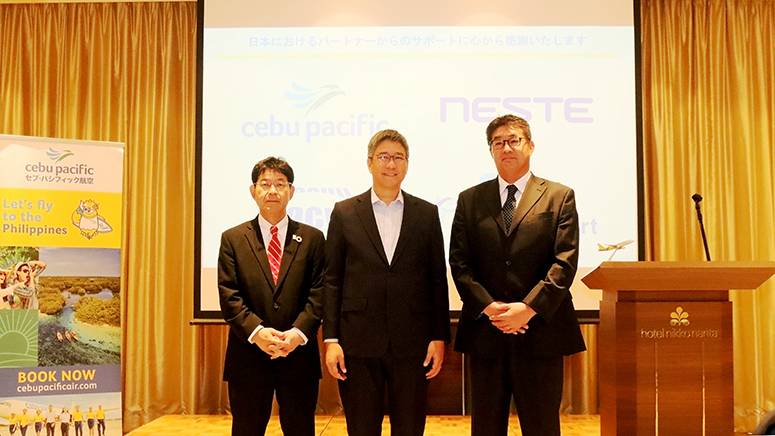
Among the list of actions to be undertaken, SAF is believed to deliver the biggest contribution to meet United Nation’s global net-zero by 2050 target.
“The International Air Transport Association (IATA) estimates that SAF will contribute 65 percent of emission reduction action to meet aviation’s net-zero target,” adds Lao. “Due to the significance of SAF for achieving net-zero, we at CEB have been actively integrating SAF into our operations since 2022.”
According to Lao, CEB has put in place a near-term roadmap until 2030 to utilize SAF across its commercial network.
“This roadmap has three initiatives,” he shares.
First is to incrementally test and incorporate SAF in CEB’s operations, which include SAF for delivery flights of the newly purchased sustainable aircraft—the A321neo.
Second is to assess the acceptance of the market and buy-in of SAF. “In this regard, we have mounted pilot commercial flights that use SAF—one last year, and another this year,” notes Lao.
Third is to establish strategic partnerships to develop and secure SAF supply. “To this end, we engage with various stakeholders towards the longer-term plan of integrating SAF fully into our regular commercial flights in the future,” Lao elaborates.
He shares that Cebu Pacific is quite pleased with the progress it has achieved since it launched its roadmap last year.

“2022 was a pivotal year for our SAF adoption as we successfully integrated SAF into four delivery flights of new Airbus NEOs,” he asserts. “That same year, we also mounted our very first commercial flight that utilized SAF. More delivery flights also used SAF in 2023, totaling seven NEOs to date. In parallel, we continue to pursue strategic partnerships and collaborations with domestic and regional stakeholders to develop future supply of SAF in the region.”
In 2022, Cebu Pacific signed a memorandum of understanding with Shell Aviation for supply of SAF beginning in 2026 until 2031.
“Another milestone that we are also very proud of was that in 2022, we earned the distinction of being the first low-cost carrier in Southeast Asia and the first Philippine airline to use SAF in commercial operations,” enthuses Lao.
This happened in September 2022 when Cebu Pacific mounted the inaugural SAF flight that utilized a 35-percent SAF blend in an A321neo that flew from Singapore to Manila.
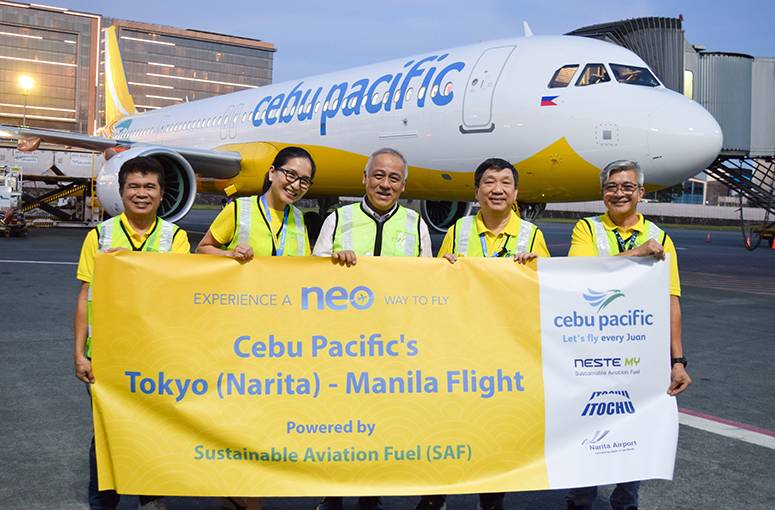
“In July this year, a brand-new A320neo from the Airbus facility in Tianjin, China, was powered with 41-percent blended SAF on its delivery flight to Manila,” adds Lao. “And two weeks ago, we signed a memorandum of understanding with Neste to work together towards establishing future SAF supply for CEB.”
Neste is the world’s largest producer of sustainable aviation fuel (SAF).
Let’s talk about SAF, baby!
Sustainable Aviation Fuel or SAF is a more sustainable alternative to conventional jet fuel. One of its major benefits is that it reduces the greenhouse emissions of air travel—compared to using jet fuel—as it is made from non-fossil fuels like used cooking oil and animal waste.
Also, using SAF doesn’t add additional carbon to the atmosphere but also reuses carbon that’s already there. In general, using SAF can reduce greenhouse emissions by up to 80 percent over the life cycle of the fuel compared to conventional jet fuel.
“Neste joins Cebu Pacific on its journey to create a carbon-neutral world and a healthier planet for our children,” says Sami Jauhiainen, acting vice president, Renewable Aviation at Neste, in a recorded message from Singapore. “This purpose is deeply rooted in our DNA. Our strategic goal is to support our customers in reducing their greenhouse gas emissions by using our products and solutions.”
Neste, as a company, is committed to support industries which are hoping to decarbonize the aviation industry.
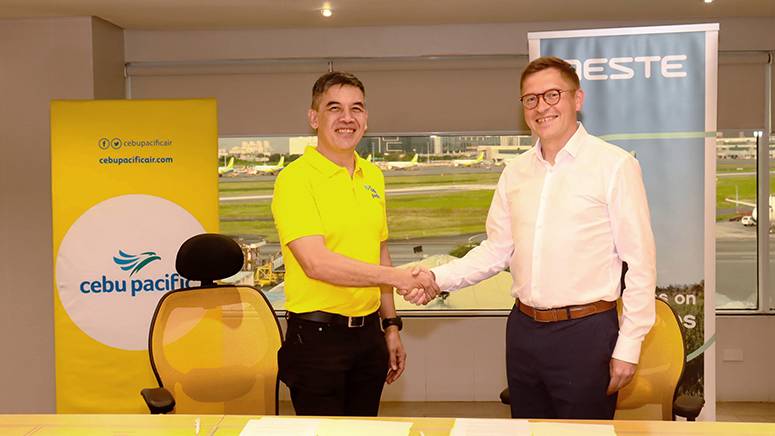
“The aviation industry has adopted an ambitious target of net-zero carbon emissions by 2050. That is needed as the carbon impact of the aviation industry is expected to grow significantly if no action is taken. But the positive news is that we have a solution available today—the SAF—to drive towards that goal which is sustainable aviation,” adds Jauhiainen. “So, it is exciting news that we are now joining forces with Cebu Pacific going forward. This sustainability journey has always been a marathon, not a sprint. We are excited with this collaboration to reach the goal of net-zero emissions by 2050.”
The signing of the MOU with Neste puts Cebu Pacific in the pathway of ensuring access to SAF in the near term to medium term.
The cost of sustainable travel? Priceless
Neste is leading the charge in ramping up the production of SAF capacity around the world.
“This year, we grew our SAF production capability already by 10-fold with the opening and expansion of our refinery in Singapore,” shares Jauhiainen.
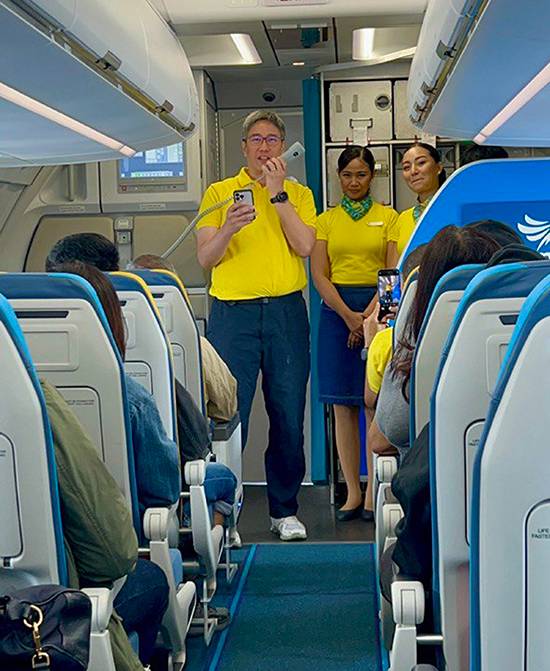
Next year, it will grow to 1.5 million tons, and towards the mid-2026 with 2.2 million tons per annum with investments that are already ongoing.
“In 2030, our aspiration to produce worth three million tons of SAF and we are already looking beyond that, continuing to grow both our current technology and raw materials, as well as innovating new kinds of raw materials and technologies,” adds Jauhiainen.
Using SAF will increase the airlines’ cost of operations. But that doesn’t stop this low-cost carrier from leading the way to a carbon-neutral world.
“From a low-cost carrier’s perspective and the industry in general, the cost of SAF today is prohibitive. It is anywhere between three and five times more than the current price of normal jet fuel,” notes Lao. “We are still at the very early stage where supply is quite minimal. We do expect that should supply come up, then the prices of SAF will eventually go down. That’s the reason why we must take a long-term perspective.”
Because for Cebu Pacific, there are non-negotiables: the environment and passengers’ safety.

“As we await sufficient SAF supply to meet the demand of the entire aviation industry, this inaugural Narita-to-Manila SAF flight represents Cebu Pacific’s ongoing efforts toward making air travel more sustainable,” Lao points out.
Other decarbonization programs that CEB has put in place include investing in fuel-efficient NEOs, optimization of flight plans, and adoption of fuel-efficient best practices to minimize fuel consumption.
“All these are concrete sustainability initiatives that bolster our commitment and support for the aviation industry’s goal of flying net-zero by 2050,” Lao enthuses.
Itochu, which acts as the branded distributor of SAF in Japan, lauded the collaboration.
“We look forward to partnering with Cebu Pacific as we strive towards sustainable aviation. Our collaboration underscores the growing demand for SAF in the Asia-Pacific region and we are ready to meet that need,” says Atsushi Onishi, senior officer of Itochu’s Energy Division.
The initiative was also warmly welcomed by Narita International Airport Corporation (NAA).
“We are honored that Cebu Pacific has chosen NAA for this initiative. Being one of the select airlines to mount SAF flights in Japan, Cebu Pacific’s commitment to sustainability is commendable,” adds Toshio Tashiro, executive officer of NAA.
Ready, set, fly
Passengers waiting to board 5J 5055 (NRT-MNL) on Oct. 25 at Gate 81 of the Narita Airport had no idea that they would be part of Cebu Pacific’s sustainable journey until the gate opened.
Xander Lao, president and chief commercial officer of Cebu Pacific, greeted every Juan with a smile and commemorative tokens as we made our way to the new, fuel-efficient Airbus 321neo.

The hardworking flight crew was headed by Capt. Eric San Domingo and First Officer Gerard Ancheta, with cabin services team members Karyn Patino, Karl Dingo, Beatrice Reyes, Alyanah Pena, and Marie Esther Del Mundo.
Once the fasten seatbelt sign was off, Lao stood in front, took the mic, and delivered his welcome spiel:
“Today, we’re all excited to introduce a NEO way to fly with Cebu Pacific. This is a special flight because for the first time, a Philippine carrier will operate from Tokyo to Manila powered by Sustainable Aviation Fuel (SAF). Combining SAF with our fuel-efficient A321 Neo aircraft, this flight will result in a 44-percent reduction in carbon emissions per passenger, setting a record for Cebu Pacific’s SAF-powered flights. So, to our dear customers, thank for choosing to fly sustainably today with Cebu Pacific.”
You’re welcome, Mr. Lao. It was such an honor and a privilege to have witnessed and experienced this momentous event in Philippine aviation history.
“Clearly, climate change is not just a CEB issue per se. It’s a global issue and all of us should come aboard,” Lao points out.
Indeed, it’s time for every Juan to fly—sustainably—and do our share in saving Mother Earth.
***
Cebu Pacific flies to Tokyo, Fukuoka, Nagoya, and Osaka.


